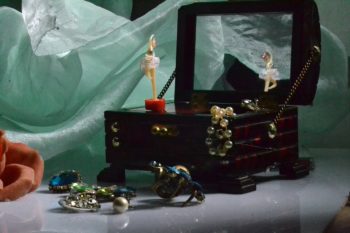
Some humanist reflections on how to find resilience, and the strength to cope, in a time of anxiety, worry, and tension.
Sometimes, in times of crisis, we ask ourselves: do I have the strength to carry on?
This is a low feeling for sure, but it’s one that every person alive has had at some stage or another. It’s normal for us to entertain this thought, to let it dance in our minds.
But this dance can go on too long. It can wreak havoc on our days. Like a mad samba that never ends, it tires us out – makes our limbs heavy, our backs ache. Our heads crave rest and comfort. We pull the sheets up close to our faces in the morning, afraid to begin again.
But here is the answer to that original question you asked yourself: yes, you do.
The discomfort you feel is normal. You are hard-wired by your evolution to detect and ruminate on threats. But sometimes you do this far too well, for far too long.
That feeling can be an anxious, never-ending dance, a rhythm that never abates. But it can also be something else.

By learning to better answer the questions we ask ourselves, we can close the lid on the music box. We can make the most of our problem-solving abilities – our evolutionary heritage as creative animals – and let the dancer rest as the rest of life carries on.
You have the evidence you can do this in spades. You are here today. Sometimes a feeling of crisis erupts in an instant. But for many of us they dawn slowly; a threat creeps and intensifies in our lives, and our worries only make them worse.
Worrying can be healthy. Our ability to worry about problems has inspired technological revolutions and sustained our species through the Ice Age, countless wars, famines.
But we often don’t harness worry well. Day to day, it can serve us well enough to let our worries run on autopilot. For the small things in life that bother us, we can often respond to them in real time.
But for bigger questions – like ‘How will I pay my rent this month?’ – this approach often will not work. It is simply a recipe for exhaustion.
Here is a trick that has been proven to work for most people. It was known to ancient people and then discovered anew by psychologists in modern times.
When you feel that worry start, recognise it for what it is – your brain trying to help you solve a problem. You know that if you let it start on its own, it will go around in circles. Your mind will pirouette all day, distracting and weakening you.
Imagine you can see the worry as a discrete object. Some choose to picture a balloon they can pop. You should pop the balloon.
It also can be a music box. A music box whose lid you can reach out and touch. Close it just as the dancer begins to twirl.
But don’t simply bottle it up.
The most important thing to do now is to make an appointment with yourself to worry constructively. Put aside half an hour in a time between work and bed to actively worry. To worry as intensely as you can. Sit and try to summon up all your worrying faculties.
Have a pen and paper nearby. You want this to be constructive worry. You want to come out of this half hour with ideas for what you can do next.
You’ll stop after half an hour – even if you feel the need to continue. But you may find you don’t need all that time. After five minutes, the lid on the music box may close on its own. Sometimes things that seem broken work fine again after you give them a rest.
You may not have an answer to your problems overnight. But one thing is certain. You won’t be ruled by worry in your days. And as a habit, this can teach us to be resilient, and to harness the gifts of our mind to better ends.
One evening, having worked and cared for others and worried a little if you needed to, you may find you have an hour free. It’s not yet time for bed!
So you ask yourself: what should I do now? The bookshelf is inviting. So is the remote. And it’s not too chilly for an evening walk. The answer is up to you.

